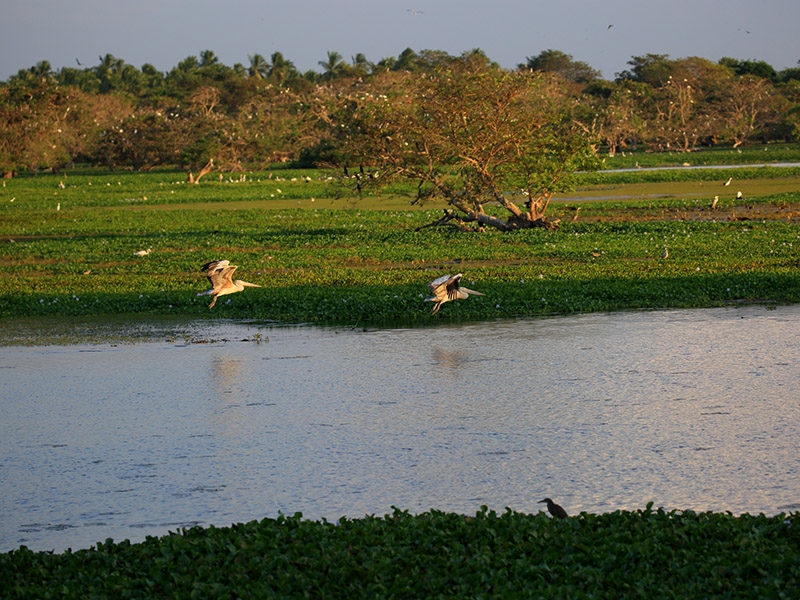Sri Lanka’s North Western Province, the Anawilundawa Bird Sanctuary, is a paradise for nature lovers and birdwatching enthusiasts. Spanning 1,397 hectares between the coastal towns of Chilaw and Puttalam, this Ramsar Wetland Site is a unique ecological haven where three distinct ecosystems- coastal, mangrove, and freshwater- converge. This travel guide offers everything you need to plan an unforgettable visit to this lesser-known gem, from bird species to spots, the best time to visit, and practical tips for an immersive experience.
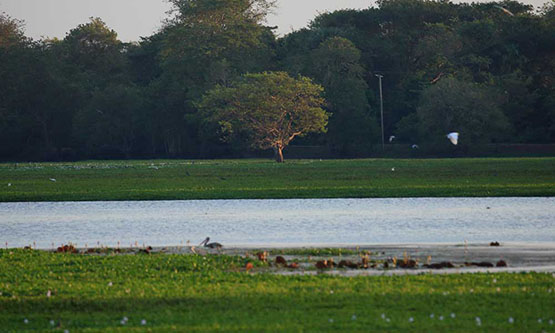
Overview of Anawilundawa Bird Sanctuary
- Location: Anawilundawa, Puttalam District, North Western Province, Sri Lanka
- Distance from Colombo: ~130 km (Approx. 3.5-hour drive)
- Best Time to Visit: August to April (Migratory bird season)
- Entry Fee: Free (No formal ticketing, but hiring a local guide is recommended)
Why Visit Anawilundawa Bird Sanctuary?
Declared a sanctuary in 1997 and recognized as Sri Lanka’s second Ramsar Wetland Site, Anawilundawa is renowned for its biodiversity. The sanctuary’s nine interconnected tanks, including six ancient manmade reservoirs built in the 12th century by King Parakramabahu the Great, create a complex irrigation system that sustains lush paddy fields and provides a haven for wildlife. With over 150 bird species, 20 mammals, 74 butterfly species, and a significant portion of Sri Lanka’s freshwater fish, it’s a biodiversity hotspot that offers serene landscapes and unparalleled birdwatching opportunities.
The sanctuary’s proximity to three ecosystems makes it a breeding and nesting ground for both resident and migratory birds, attracting birdwatchers and photographers from around the globe. Its tranquil, less-commercialized setting offers a refreshing escape from crowded tourist spots, making it ideal for those seeking an intimate connection with nature.
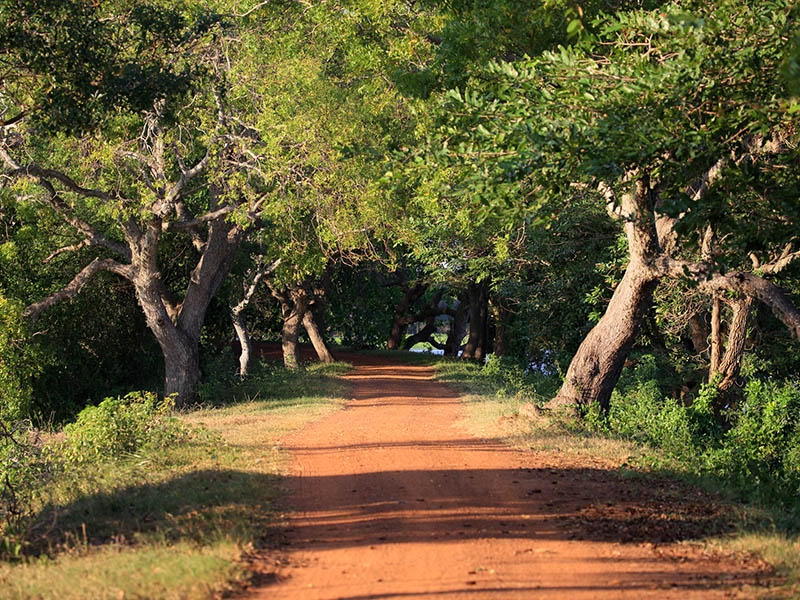
Top Attractions and Activities
1. Birdwatching
- Resident Birds: Herons, Open-bills, Great Cormorants, White Ibis, Egrets, Storks, Purple Swamphen, and the elusive Black-naped Oriole.
- Migratory Birds: Greater Flamingos, Whiskered Terns, and Saunders Terns, best spotted between October and April.
- Endemic Species: Sri Lankan Green Pigeon and Sri Lankan Whistling Thrush.
Bring binoculars and a camera with a zoom lens for the best experience. Early morning (around 6:00 AM) or late afternoon (around 3:00 PM) are ideal for spotting active birds in soft light.
2. Nature Photography
The sanctuary’s picturesque wetlands, framed by water lilies, tall grasses, and ancient trees, provide stunning backdrops for photography. Capture the vibrant kingfishers, graceful herons, or the serene beauty of the cascading tanks like Pinkattiya, Maradansola, and Anawilundawa.
3. Hiking and Nature Walks
Explore the sanctuary’s red-top roads, lined with gnarled trees that offer shade and scenic views. Walking trails wind through marshes and forests, providing opportunities to spot mammals like the Toque Monkey, Fishing Cat, Rusty Spotted Cat, and Indian Otter, as well as colorful butterflies.
4. Boat Rides
While not as widely advertised as in some other sanctuaries, limited boat rides may be available on the sanctuary’s lakes, offering a unique perspective on the wetlands and their wildlife. Check with local guides or nearby resorts like Twin Waters Resort for availability.
5. Cultural Exploration
The sanctuary is near the historic Munneswaram Temple, a 1,000-year-old Hindu temple complex. Combine your visit with a cultural stop to enrich your experience.
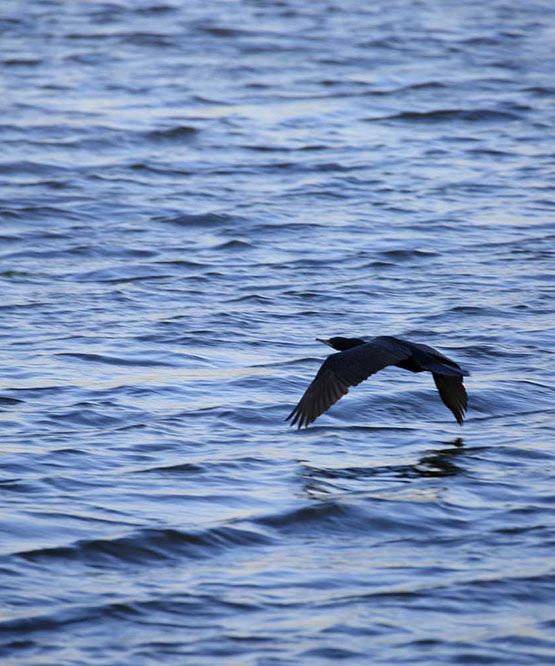
Best Time to Visit
The optimal time to visit Anawilundawa is October to April, when migratory birds flock to the sanctuary, and water levels support abundant wildlife. However, resident and endemic species can be spotted year-round. Avoid visiting during severe droughts, as wetlands may dry up, reducing bird activity. Early mornings and late afternoons offer the best light and wildlife activity.
Flora & Fauna
Apart from its avian residents, the sanctuary is rich in wetland flora, including water lilies, reeds, and mangroves. You may also spot:
- Monitor lizards
- Butterflies
- Amphibians
- Freshwater fish and crustaceans
How to Get There
Anawilundawa Bird Sanctuary is approximately 100 km north of Colombo, making it an accessible day trip or a stop en route to Kalpitiya or Wilpattu National Park. Here’s how to reach it:
- By Car: From Colombo, take the A3 road towards Puttalam. The sanctuary is about a 2.5-hour drive (120 km). From Chilaw, it’s a 20 km drive north, and from Puttalam, it’s a short detour off the main road.
- By Public Transport: Take a train or bus from Colombo to Chilaw (10 km from the sanctuary). From Chilaw, hire a tuk-tuk or taxi to the sanctuary’s entrance near the Anawilundawa junction.
- By Guided Tour: Many operators, such as those from Negombo or Dolphin Beach Hotel, offer guided day tours with knowledgeable naturalists.
Travel Tip: Look for the small, colored sign marking the sanctuary’s entrance off the Chilaw-Puttalam road.

Where to Stay
While Anawilundawa is ideal for a day trip, nearby accommodations enhance your experience:
- Twin Waters Resort: A 10-minute drive from the sanctuary, offering comfortable stays with easy access to the wetlands.
- Dolphin Beach Hotel: Located in Kalpitiya (73.4 km away), this resort provides guided tours to the sanctuary.
- Chilaw Hotels: Budget and mid-range options are available in Chilaw, 20 km south.
For a more immersive experience, consider eco-lodges or guesthouses in Puttalam or Negombo.
Practical Tips for Visiting
- Hire a Guide: Local guides, like those from Twin Waters Resort or Dolphin Beach Hotel, are knowledgeable about bird species and can enhance your experience. Pre-arrange through your accommodation or tour operator, as on-site guides may not always be available.
- What to Bring: Binoculars, a camera, insect repellent, sunscreen, a hat, comfortable walking shoes, and water. Plastics are prohibited to protect the environment.
- Conservation Awareness: Respect the sanctuary’s rules, stick to designated paths, and avoid disturbing wildlife. Learn about wetland conservation efforts to appreciate the sanctuary’s ecological significance.
- Weather Preparedness: The sanctuary’s average temperature ranges from 25°C to 30°C, with annual rainfall around 1,000 mm. Pack light, breathable clothing and a raincoat during the monsoon season (May to September).
Travel Tips
- Visit early morning or late evening for best bird activity.
- Wear neutral-colored clothes for better camouflage.
- Carry insect repellent, hats, and sunscreen.
- Hire a local guide for a richer experience.
- Avoid loud noises and littering – it’s a sensitive ecosystem.
People Also Ask
1. What is the best time to visit Anawilundawa Bird Sanctuary?
The best time to visit is October to April, when migratory birds are present, and water levels support abundant wildlife. Early mornings or late afternoons are ideal for birdwatching.
2. How do I get to Anawilundawa Bird Sanctuary from Colombo?
Drive 2.5 hours (120 km) via the A3 road towards Puttalam, or take a train/bus to Chilaw and hire a tuk-tuk to the sanctuary’s entrance. Guided tours from Negombo or Kalpitiya are also available.
3. Are boat rides available at Anawilundawa Bird Sanctuary?
Limited boat rides may be available on the sanctuary’s lakes, depending on water levels and local operators. Contact nearby resorts like Twin Waters Resort or check with local guides for availability.
4. What birds can I see at Anawilundawa Bird Sanctuary?
You can spot over 150 species, including Herons, Open-bills, Great Cormorants, White Ibis, Egrets, Purple Swamphen, and migratory birds like Greater Flamingos and Whiskered Terns. Endemic species include the Sri Lankan Green Pigeon.
5. Is Anawilundawa Bird Sanctuary suitable for photography?
Yes, the sanctuary’s wetlands, water lilies, and diverse birdlife make it ideal for nature photography. Bring a zoom lens and visit during early morning or late afternoon for the best light.
6. Are there guided tours available at Anawilundawa?
Yes, guided tours are offered by local resorts like Dolphin Beach Hotel or Twin Waters Resort. Booking in advance is recommended, as on-site guides may not always be available.
7. Is Anawilundawa Bird Sanctuary worth visiting?
Yes, it’s a must-visit for birdwatchers and nature enthusiasts seeking a tranquil and uncrowded experience. It’s particularly rewarding during the migratory season.
8. What is the best time to visit Anawilundawa Bird Sanctuary?
The best time is from August to April, during the migratory bird season. Mornings and late afternoons offer the best birdwatching opportunities.
9. Are there guided tours available in Anawilundawa?
Yes, local guides offer birdwatching and ecological tours. Hiring a guide enhances the experience, especially for identifying birds and understanding the ecosystem.
10. How do I reach Anawilundawa Bird Sanctuary from Colombo?
You can reach Anawilundawa via car, train, or bus. The most convenient way is by car via the A3 highway. Trains and buses also connect to nearby towns like Chilaw and Puttalam.
11. What birds can be seen in Anawilundawa Bird Sanctuary?
Over 150 species including Painted Storks, Openbill Storks, Purple Herons, Spoonbills, and even Greater Flamingos during some seasons.
Nearby Attractions
- Wilpattu National Park (1.5 hours away): Known for its leopards, elephants, and diverse birdlife.
- Kalpitiya (73.4 km): Offers dolphin and whale watching, beaches, and water sports.
- Munneswaram Temple (nearby): A historic Hindu temple complex, perfect for a cultural detour.
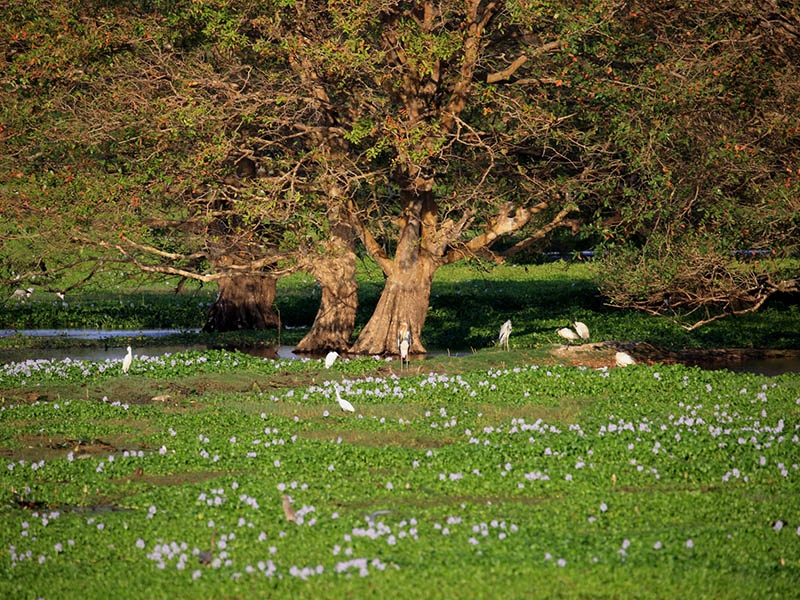
Why Anawilundawa Should Be on Your Sri Lanka Itinerary
Anawilundawa Bird Sanctuary offers a serene escape into Sri Lanka’s natural beauty, combining rich biodiversity with cultural and historical significance. Whether you’re a birdwatching enthusiast, a nature photographer, or simply seeking tranquility, this Ramsar Wetland Site delivers an unforgettable experience. Its proximity to Colombo and other attractions like Wilpattu and Kalpitiya makes it an easy addition to any Sri Lankan adventure.
Plan your visit to Anawilundawa Bird Sanctuary today and discover the enchanting world of Sri Lanka’s avian treasures!
What birds are in the Anawilundawa wetland?
Anawilundawa Sanctuary | Bird Watching in Sri Lanka
Some of the Bird species found here are a large breeding colony of Herons, the Open-bill, Great cormorant, White ibis, Egret, Stalk, Pheasant tailed jacna and the Purple swamp hen.
What are the top 10 bird sanctuaries in Sri Lanka?
The other important bird watching sites are Kalametiya Bird Sanctuary, Sinharaja Rain Forest, Bodinagala Forest Reserve, Peak Wilderness Sanctuary, Knuckles Biosphere Reserve, Kitulgala Forest Reserve, Kanneliya Rain Forest, Yala NP, Wilpattu NP, Udawalawe NP, Wasgamuwa NP, Gal Oya NP, Minneriya NP, Mannar Island,
How many Ramsar wetlands are there in Sri Lanka?
Sri Lanka Set to Expand Ramsar Convention Wetlands: Three New …
Sri Lanka currently has 6 wetlands designated as Ramsar sites, which are of international importance. These wetlands include Wilpattu, Bundala, Kumana, Anawilundawa, Vankalai, and Madu Ganga. The Ramsar Convention recognizes these wetlands for their ecological significance and value.
What is the meaning of Ramsar?
Ramsar sites refer to sites listed on the List of Wetlands of International Importance, also known as the Ramsar List. These sites are designated because they meet the Criteria for identifying Wetlands of International Importance.
© All images and video content are credited to their respective owners.

